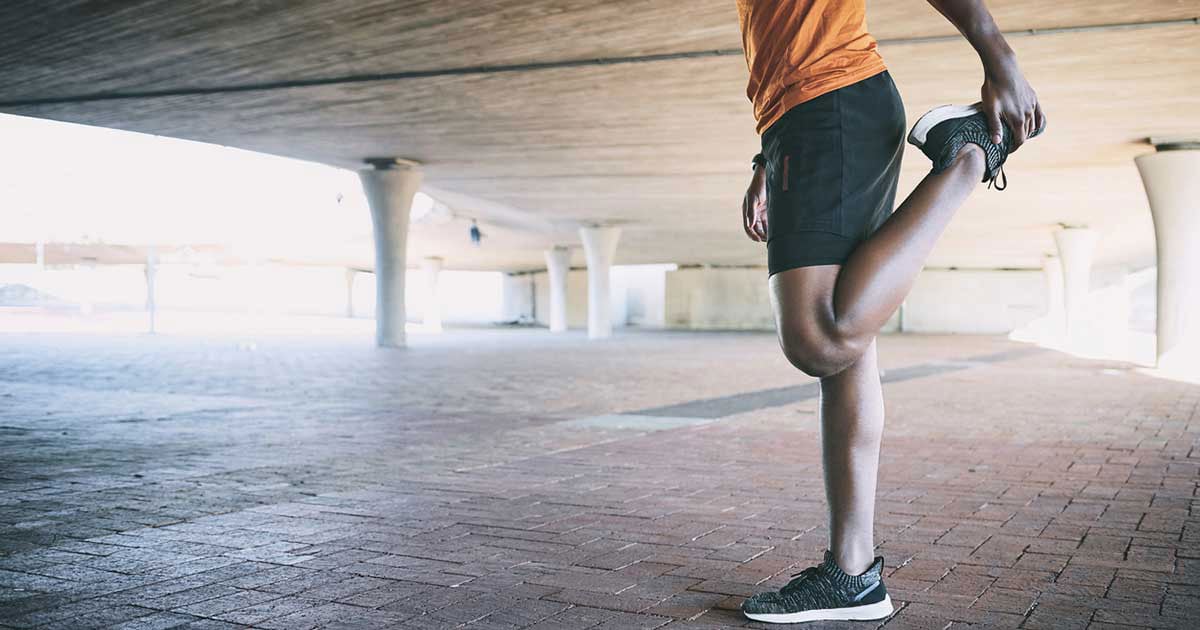
Advice to improve your movement, fitness, and overall health from the #1 in orthopedics in the U.S.
Stretches and Exercises for Knee Pain, from a PT
For most people, managing knee pain involves a combination of stretching and strength training. Here’s what a PT has to say.
Advice to improve your movement, fitness, and overall health from the #1 in orthopedics in the U.S.
Knee pain can have various causes but is typically due to a muscular imbalance. “One muscle group may be a little stronger or more overworked than another muscle group,” says Anil Nandkumar, PT, DPT, a physical therapist at HSS. In athletes, particularly runners, knee pain can be caused by bad form. Because each person has their own running style, different kinds of form can cause different pains or compensations in the muscles.

But people who do a lot of walking and moving around, stepping on and off curbs or any number of other repetitive daily activities can develop knee pain just as easily as any athlete. In these cases, pain is often due to repetitive stress in the same area, says Nandkumar. “Even though you may not participate in sporting events or athletic competitions, you may still do athletic movements throughout your daily routine, and therefore similar injuries may arise.”
No matter the cause, stretching can help, as can some simple exercises designed to increase flexibility and mobility in the knee joint.
How Stretching Helps with Knee Pain
Stretching can address the muscular imbalances involved in knee pain by improving strength and flexibility. For example, if you are a runner who maybe isn’t so flexible, you can only access a certain amount of your range of motion, forcing you to rely more heavily on certain muscles that can then be overextended.
Stretching can also help with knee pain caused by inactivity. During the pandemic, many people likely found that they were sitting more than usual, which can cause tight hamstrings. “If the hamstrings aren't properly stretched, you're not able to use the full potential of the muscle, which can cause pain in the muscle itself or in the knee,” explains Nandkumar.
Stretches and Exercises to Help with Knee Pain
Because all the muscles in the body are connected, strengthening areas such as your core and gluteal muscles can help strengthen the knee and make injury and pain less likely. Here are some stretches and exercises Nandkumar suggests that can help prevent and treat knee pain.
Side Leg Raise
- Lie on your side with your legs straight. Bend your forearm and rest your head in your hand.
- Keeping your legs straight, slowly lift your top leg up toward the ceiling, Pause, then lower your leg to the starting position.
- Do a few repetitions, then repeat on the other side.

Single-Leg Lift
- Lie on your back with both legs straight and your feet extended. Rest your hands at your sides on the floor.
- Slightly flex one foot, then lift the leg in the air. Pause, then slowly lower your leg to the floor.
- Do a few repetitions, then repeat on the other leg.

Hamstring Stretch
- Lie on your back with your legs straight in front of you and your arms on the floor at your sides.
- Grasp one leg with your hands, holding behind your thigh. Raise your leg in the air with your foot flexed. Straighten the leg as much as possible without locking the knee.
- Hold the stretch, return to the starting position, then repeat with the other leg.

Quadriceps Stretch
- Stand with both feet flat on the floor, shoulder-width apart.
- Bend one knee and bring your heel toward your buttock. Reach back and hold your foot with your hand.
- Hold the stretch, then slowly lower your foot to the floor. Repeat with the other leg.

When to See a Doctor for Knee Pain
While most cases of knee pain can be managed by stretching the muscles and doing strengthening exercises, there are some instances when it might be wise to see a medical professional. For example, if you develop sudden or sharp knee pain and haven’t recently done any strenuous activity, that could be cause for concern. If knee pain is affecting your mobility or ability to bear weight on your leg, that’s also a reason to seek out medical help.
Also, “if conservative methods like resting and icing or using pain medication or anti-inflammatories aren't working, that would be another reason to see a medical professional,” Nandkumar explains. Symptoms such as clicking or popping in the knee or knee buckling also warrant further attention.
Overall, doing any type of strength training and regular stretching can help keep your knees healthy and free from pain. Eating a healthy diet and staying hydrated can help prevent inflammation in the body that can contribute to muscle pain and soreness. And if you do a lot of sitting, make it a point to set an alarm to get up and move around every hour.
Published 12/4/2022


